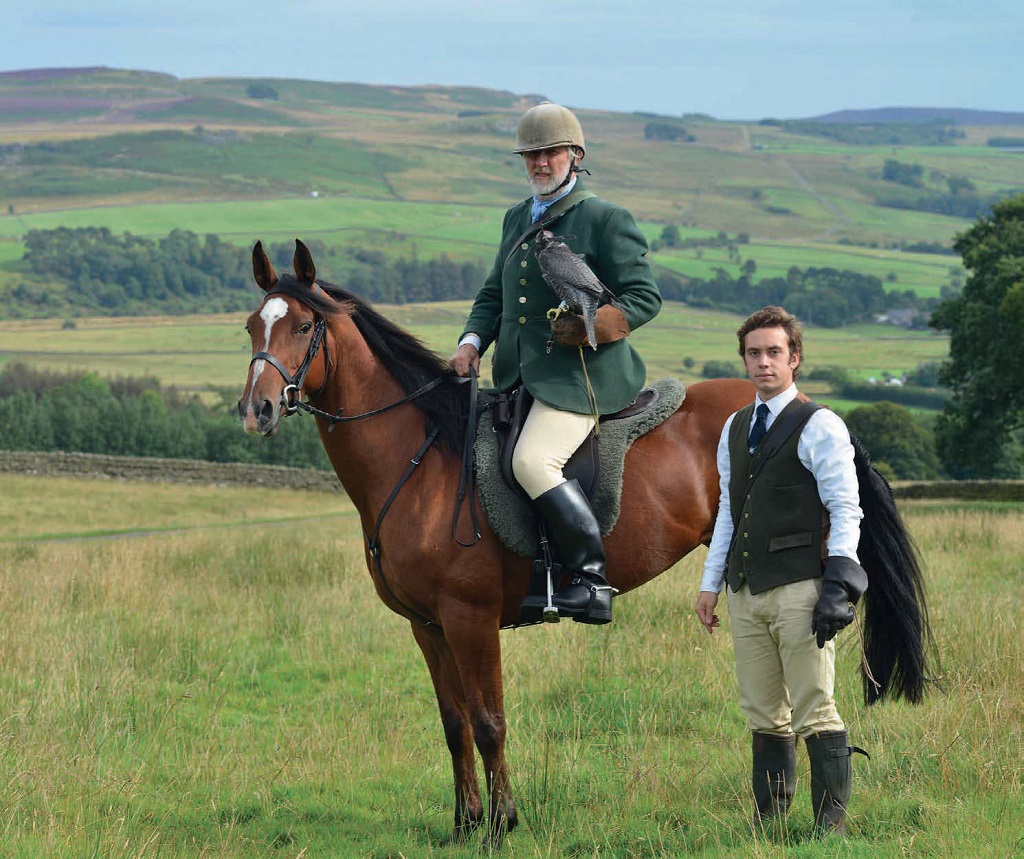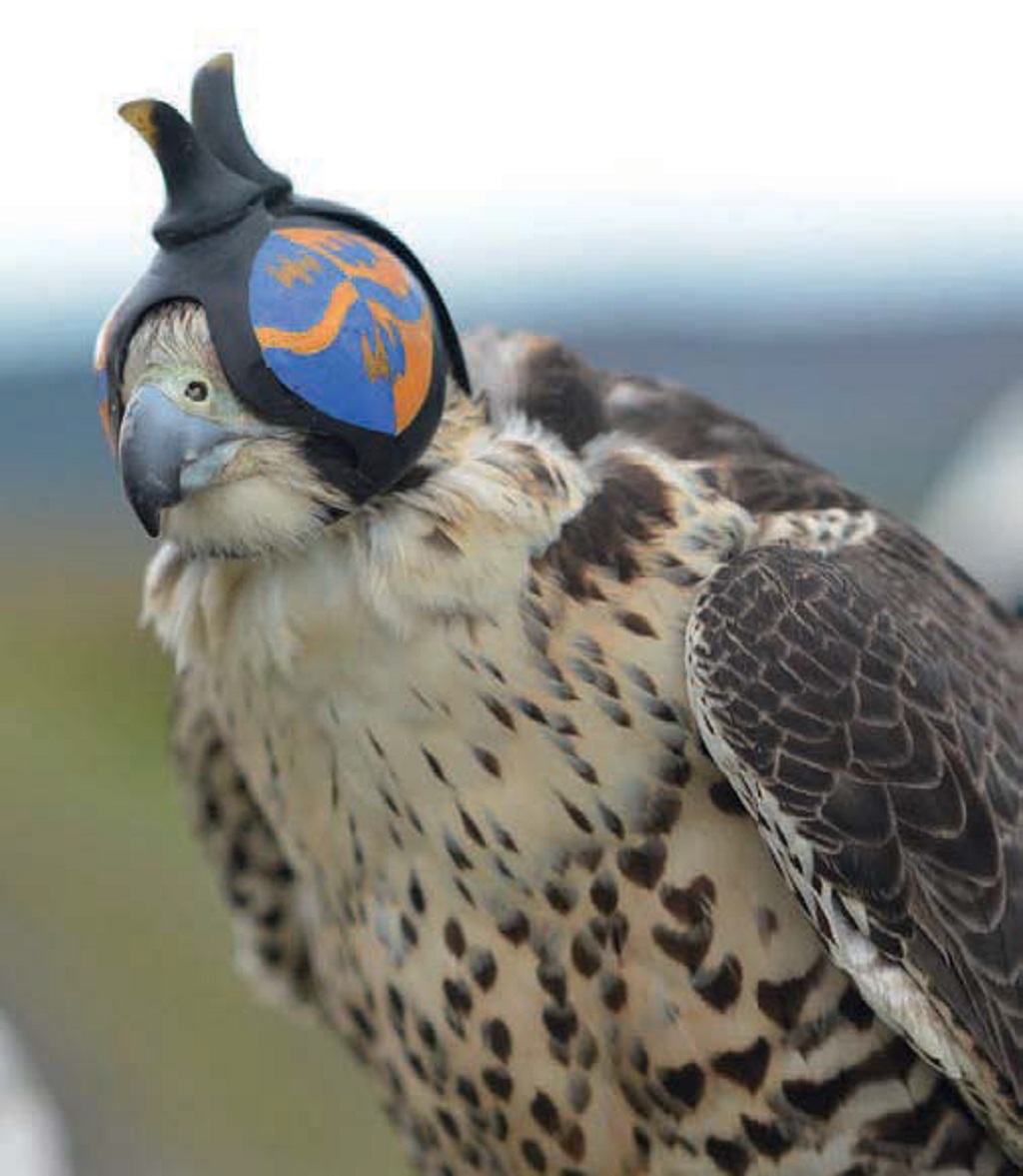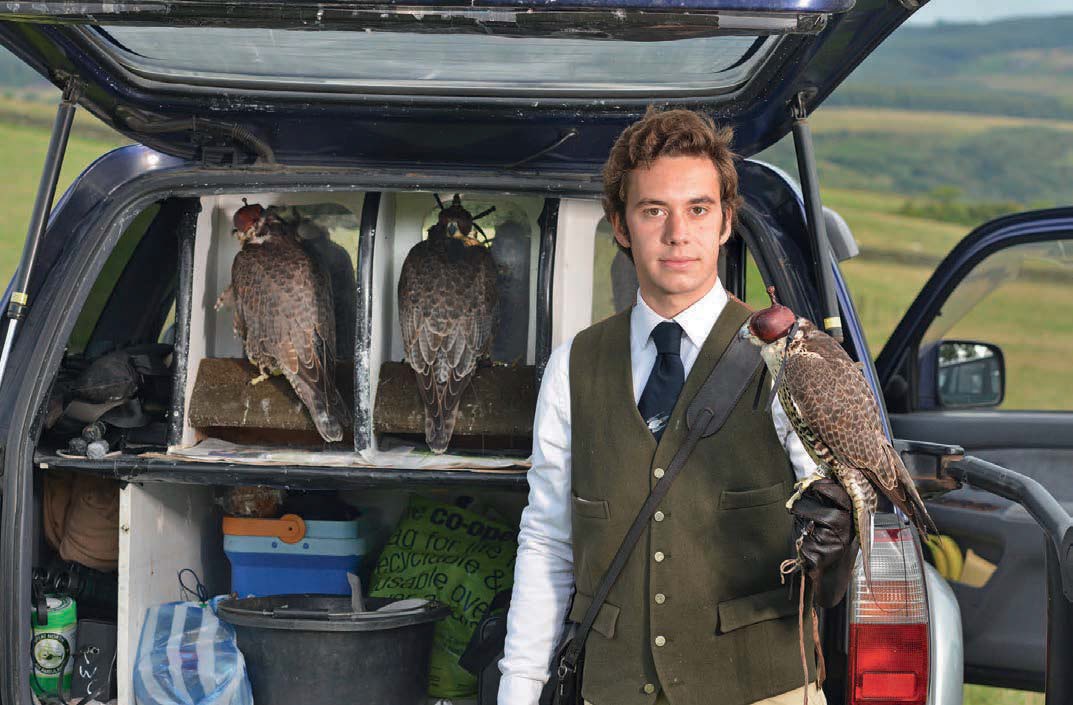
Something to crow about with the falconers
Hunting their quarry on horseback, the Northumberland Crow Falconers are ensuring a time-old tradition of hawking is kept alive in the borderlands.
Mounted on a bay mare, dressed in the traditional dark green livery worn by hawk hunters of the late 1700s and carrying a falcon on his arm, Dr Nick Fox calls his party to order and sets out into the borderland hills in search of crows.
Flanked by two riders tasked with scouring the rugged moorland for suitable quarry, with another eight members following behind, it is a timeless scene that could belong to any of the past few centuries, were it not for the hawking van bringing up the rear or the two radio trackers clipped into the bird’s feathers.
It’s late September and I’m out with the Northumberland Crow Falconers (NCF), the oldest mounted falconry group in the UK, for one of their last hawks of the 2015 season. Led by Dr Fox, a world authority on falconry – he was awarded the OBE for services to falconry and to the conservation of raptors – the group has been stalking and catching crows along Hadrian’s Wall since 1992.
Hugely popular in the Middle Ages, enclosure almost brought an end to falconry. Then in 1770 the Confederate Hawks of Great Britain was created. It continued in various forms until the British Falconers’ Club, of which Nick is vice-president, was formed in 1927.
Today the sport continues across the UK, but the NCF is the only mounted falconry group.

Dr Nick Fox, master of the NCF, with falconer Alejandro Sola (Photo: Angus Blackburn)
Tagging along with falconer Alejandro Sola, a Spanish law student and bird of prey aficionado who works with Nick in his summer breaks, and assistant falconer Tom Spink, we follow behind as the 11-strong hunt heads out into the hills. Bumping along farm tracks in the hawking van – a blue 4×4 with an aerial protruding skywards from the roof – we follow the horses, stopping occasionally to scan the landscape with binoculars in search of crows.
In the specially-adapted boot behind me, five falcons rustle and coo, patiently waiting for their turn to stretch their wings – one bird is flown at once, then replaced, giving each a run out and some necessary recovery time.
Mainly Peregrine-Saker hybrids, the impressive falcons are specially bred at Nick’s International Wildlife Consultants (UK) Ltd base in Wales, one of the oldest falcon breeding facilities in Europe, which exports birds to the Middle East and supplies the Royal families of the United Arab Emirates and Bahrain.
The NCF birds are mostly social imprints, meaning they aren’t hand reared but have been raised around people. ‘They are fed by their mother in the early stages, then we take them off, feed them a little bit and put them back with their mother at night,’ Tom explains.
‘Basically they are used to people but they know they’re falcons.’ Training with a lure (a dummy crow on a cord) begins as soon as the chicks stop being tweezer fed. ‘They start their training as a little ball of fluff,’ Tom tells me.
The Peregrine-Saker hybrid is the perfect bird to hunt carrion crows; top speeds are intrinsic to the Peregrine, while the Saker genes add tenacity and the ability to kill on the ground.

A masked falcon (Photo: Angus Blackburn)
Weighing in at between 700g-1kg, the falcons are big enough to handle crows but not so big that they are too intimidating, with optimum flying weight depending on the individual bird.
‘You have to be very careful with their food so they put muscle on.’ Alejandro says. ‘They have to have an appetite or they will not fly or come back, but they cannot be too hungry or they will be weak. We have to find the balance.’
It takes just two weeks to teach the birds to hunt and return; building fitness takes longer, with each put through their paces in a special training regime, steadily increasing flight time and stamina with each outing. Normally six to eight NCF falcons are kept in hunting condition – two male Gyr-Peregrines make up the half dozen out today – and they account for about 100 crows per season. With prearranged permission from the landowners – farmers are pleased to see them as they kill the crows – the NCF hawks over an area of 150,000 acres.
As the hunt spreads out to search the white land beneath the track, I get out of the vehicle and settle myself in a good spot on the hillside to watch the action unfold. Nick carries the falcon through the middle beat, while other members ride the flanks in pairs, scanning the ground for crows. It’s not long before they spot one and Nick instructs riders over the radio to spread out, positioning them along coppices and in front of a field of sheep.
When the falcon is slipped, members play a crucial role, manning coverts and livestock to prevent the quarry from finding cover. ‘The crow’s instinct is to head for cover, so you put a line of horses in front to act as a deterrent,’ Tom explains. ‘The crow should go back out into the open again where the falcon can attack it.’

Falconer Alejandro Sola, from Spain (Photo: Angus Blackburn)
With riders quietly heading off to man nearby clumps of trees and a field of sheep, Nick unhoods the falcon, holding the bird up so it can get sight of its prey, then slips it.
Majestic in flight, the falcon swoops toward the crow, soaring through the air at astonishing speed. A moment of silence, then the crow spots danger and heads towards the woodland. A wall of sound erupts as the riders respond, their calls to deter the startled bird adding to the thunder of hooves as the horses gallop up and down the tree line, flushing the crow away from the cover.
It’s worked, the jet-black corvid changes direction. Forced away from the trees it rises in circles and heads out into the open field. The falcon is faster and gaining as the two disappear over a hill and out of my sight. News of the kill reaches us via radio and the hawking van is dispatched to retrieve the falcon.
After a convivial picnic starring profiteroles and raspberry vodka, members filter out into the fields once more. The prospect of a second kill is thwarted when a surprisingly resilient crow slips through the falcon’s claws and manages to hurl itself into a coppice, but no matter. The thrill is in the exhilarating ride amid a stunning landscape; teamwork; and the magic of watching these incredible birds in action. The mesmerising sight as the falcons jink, stoop and dive above the moorland, continuing a tradition that’s played out for thousands of years, really is pretty special.
The British Falconers’ Club aims to preserve the ancient art of falconry and the conservation of birds of prey. www.britishfalconersclub.co.uk
(This feature was originally published in 2015)
TAGS

